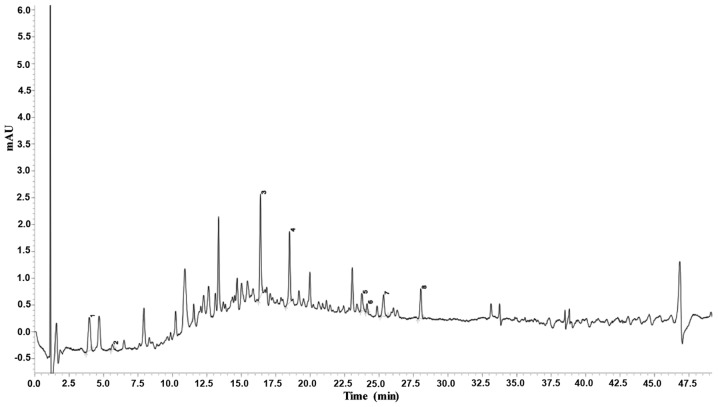Figure 1.
Analysis of the chemical profile of LSE by a UHPLC-SPD-MS-MS chromatogram. The chemical fingerprint of LSE was analyzed at 254 nm by a Shimadzu LCMS-8040 UHPLC system, which comprised two LC-30AD pumps, a SIL-30AC autosampler with a CTO-30AC column oven, a DGU-20A5 degasser and a Shimadzu CBM-20A system controller. Chromatographic analyses were achieved at 45°C with an InertSustain C18 column using water-formic acid (100:0.1, v/v) and methanol as the mobile phase A and B, respectively. The delivered rate of mobile phase was 0.25 ml/min with the injection volume of 1 μl. For the gradient separation, the process was as follows: 15–15% B at 0–2.0 min, 15–80% B at 2.0–5.0 min, 80–80% B at 5.0–7.0 min, and 80–15% B at 7.0–7.5 min. The data were analyzed by LabSolutions software (version 5.75). The major ingredients of LSE are indicated as 1–8. The numbers indicate the following substances: 1, adenosine; 2, 5-hydroxymethyluridine; 3, 4-p-coumaroylquinic acid; 4, procyanidin B; 5, procyanidin A; 6, 5′-β-D-glucopyranosyloxy jasmonic acid; 7, 4-O-(trans-p-coumaroyl) quinic acid; and 8, procyanidin tetramer. LSE, lychee seed extract; UHPLC, ultrahigh performance liquid chromatography.

